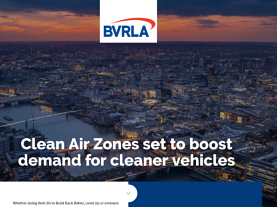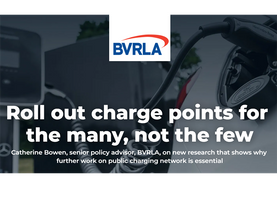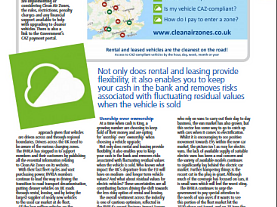Writing for EV Fleet World Magazine, the BVRLA's Thomas McLennan looks at BEV growth and the assocation's areas of concern that may slow it down, not just for cars but large vans and HGVs.
So far, 2021 has been another challenging year for the UK. The crisis of Covid-19 and its immediate impacts has shifted into an economic ‘long covid’ where supply and labour shortages create short-term chaos and long-term pain. However, despite these challenges, EV growth has been a constant; the battery electric vehicle (BEV) car market share and absolute registration figures continue to grow rapidly.
BVRLA figures suggest the underlying strength in this growth is driven by a ferocious uptake from company car and salary sacrifice drivers. The single biggest driver of the EV revolution in the UK is the Benefit-in-Kind taxation structure, which currently makes it significantly more tax-efficient to opt for a BEV than any other type of vehicle. Without supply constraints, 2021 would have been an even stronger year for BEVs.
Unfortunately, not all segments are in as fortunate a position as company car and salary sacrifice drivers. The BVRLA’s ‘Road to Zero Report Card’ sets out how supply, demand and infrastructure are performing across cars, vans and HGVs separately. While cars are surging ahead to their phase-out deadlines, larger vans and HGVs are still decidedly in the slow lane. The total cost of ownership equations do not yet add up for many applications, while the current infrastructure cannot support operators looking to make the switch either.
The BVRLA has called on the Chancellor to use the 2021 Autumn Budget and Spending Review to embed the current momentum and boost segments that are falling behind.
The BVRLA has four areas of concern:
- Private infrastructure is still uneconomical for most fleets to roll out. Without affordable access to private infrastructure, rental and depot-based fleets in the UK will be unable to transition. Firms stand ready to do their part but need more support. We believe a series of match-funded grants are essential to unlocking the next wave of fleet demand for EVs.
- The Plug-in Grant is still critical to the affordability of EVs for certain use cases and vehicles. Funding for the grant will run out in 2022/23 and, for some segments, this is too soon. The Plug-in Grant requires a targeted top-up to enable it to continue to make vehicles viable in hard to transition use cases. Vans are a clear group that will need continued support, but car clubs and or lower-income consumers are also among those that could require additional support. Funds must be made available.
- Taxation needs to be certain and give the right incentives. While Benefit-in-Kind has been a critical driver for EV uptake, firms and drivers need certainty over rates to continue to transition. Foresight is rapidly decreasing, we need to know what future rates will be and how government plans to increase them as we get closer to the phase-out deadline. More broadly, as fuel duty revenues decline, a new vehicle taxation system will be needed. The development and implementation of a new tax structure cannot be rushed. Conversations need to start in earnest now to be implemented effectively by 2030.
- As new BEV sales surge, concerns around the used market increase. It is not yet clear if the used market will be able to absorb the enormous numbers of vehicles that will be de-fleeted in three to four years’ time. Especially as new BEVs prices drop and ranges improve. If firms believe used BEV residual values will not hold, it will lead to more conservative pricing strategies now, driving up the costs of new EVs. Intervention is needed to ensure the used market functions smoothly, consumers are confident and aftermarket operators have the skills and confidence they need to work on the used BEVs coming through their workshops.
The progress to decarbonise road transport continues apace and with the right policies in place, the Government’s ambitious phase-out targets are entirely achievable. We look forward to the Autumn Budget and Spending Review on 27 October, to see what next steps there may be on this incredible journey.
This article features in issue 5 of EV Fleet World.




